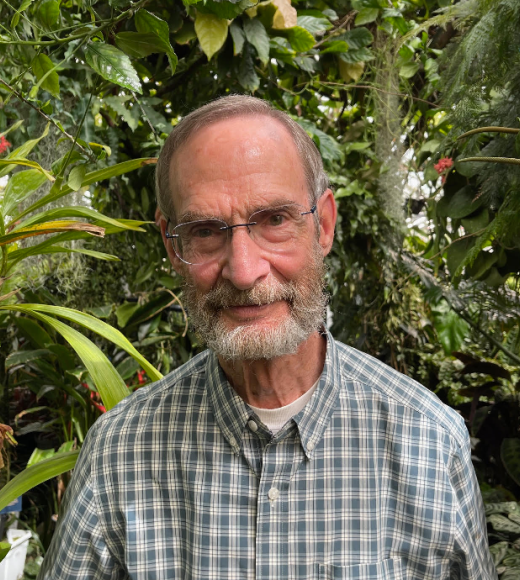
Position Title
Director Emeritus
- Botanical Conservatory
My first plant memory is Bermuda Grass raggedly climbing up a fence. It was just background to other things happening, almost not qualifying to be alive except it kept spreading... Palms, cedars, and maidenhair ferns joined as memorable individuals later in my childhood. The cast of plant characters increased significantly during my first job as student assistant in the UCD Botany greenhouses in January 1966. I applied for the position because I had a full class load of math and physical sciences and wanted a contrast in my working life. Hours in the greenhouse were a delight with physical activities including watering, pruning, propagating, soil mixing, and pot washing. The atmosphere was quiet and peaceful, permeated with a rich organic smell. It was a special home away from home for four years with many projects being added to my routine tasks.
I ended up taking an extra year at UCD to add econ and accounting to my math to qualify for business positions. The summer I graduated I had an internship with Campus Crusade for Christ, a great combination of forests, people, and faith. Next was a year helping a friend in a moving and storage company managing warehouses where the household goods of military personnel in the Sacramento area were sent out and received. Just out of college working with crusty truckers and veterans fresh from Viet Nam, I learned a lot about life.
After the warehouse contract was completed, I received various job offers but most of them involved sitting at a desk in an office with a computer or relocating to Southern California, neither of which were healthy options. When on campus checking for more opportunities at the alumni placement center, I dropped in at the Botany greenhouses. Bijan Dehgan who directed the Conservatory was finishing his PhD and the greenhouse manager who had hired me as a student both asked if I was interested in being an understudy to take over when Bijan left. I objected that I had no academic background but they offered the understudy position no strings attached for a year. I immediately started taking and loving Botany and Horticulture classes which gave me needed tools and understanding and combined into an Environmental Horticulture Nursery Management Masters in 1980. And the Conservatory job itself was a rewarding mix of caring for plants (beautiful, non-complaining, fragrant), helping the teaching and research effort, and working with people. After Bijan left, Jane Sakauye and years later Doug Walker and Ernesto Sandoval formed some extraordinary teams. The collection continued to expand to fulfill research and teaching requests and flourished also from the skills and energy of numerous outstanding interns including Marlene Simon, the present curator. Extended plant study excursions to Mexico in 1986, Namibia, South Africa (where I presented my master's research on Dorstenia), and Madagascar in 1993, and Borneo in 2000 brought alive the relationships and culture needs of so much of the collection. Other high points were hosting the Association of Education and Research Curators annual meeting and the first west coast flowering of the Corpse Flower from a plant I had grown from seed.
I loved the Conservatory people, plants, and activities but my parents needed care and the Greenhouse operations had capable staff so I retired in July 2008. Several years later after both my parents had died, I had freedom to volunteer with Wycliffe Associates helping with construction projects, leading English language learning workshops, coaching teams of nationals in Bible translation, and facilitating literacy for deaf, blind, and deaf blind, from Australia, to South America, Africa, and Asia. Everywhere I go in wild areas and cultivated gardens I recognize plant friends I cared for in the Conservatory. But I am still drawn back to the UC Davis Conservatory to relish the new specimens like the outrageous giant Amazon waterlily as well as the peacefulness and rich organic smell.
